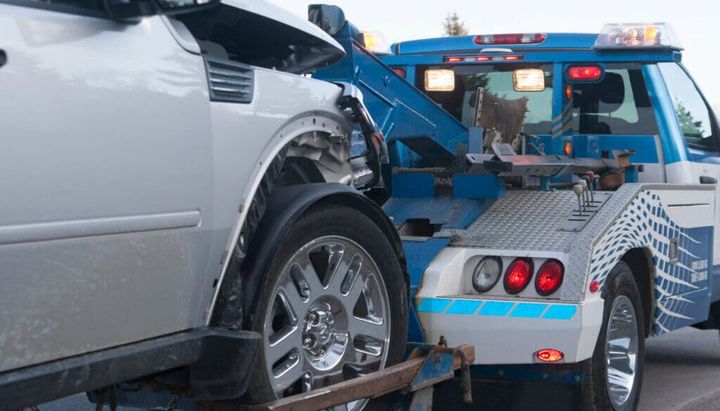


Towing and vehicle recovery operations require specialized equipment to ensure safety and prevent damage. Among these essential accessories are tow hooks, which provide secure attachment points for tow straps, chains, or cables. This article delves into the various types of tow hooks available, their materials, finishes, mounting options, and usage guidelines, equipping you with the knowledge to make an informed decision.

Tow hooks are designed to distribute the pulling force along the reinforced frame of a vehicle, enabling a safe and secure towing process. They are typically installed on the front or rear of a vehicle, offering a sturdy connection point for tow straps or chains. Proper use of tow hooks can prevent damage to both vehicles and minimize the risk of accidents during recovery or towing operations.
Tow hooks are available in different materials and finishes, each with its own advantages and disadvantages. Understanding these materials and their finishes is crucial in selecting the right tow hook for your needs.
| Material | Advantages | Disadvantages |
|---|---|---|
| Steel | - Extremely strong and durable - Suitable for off-road applications | - Prone to rust if not properly maintained - Heavier than other options |
| Aluminum | - Lightweight - Less prone to rust | - Not as strong as steel - Can bend under extreme loads |
| Finish | Description | Pros | Cons |
|---|---|---|---|
| Powder-Coated | A thick, durable coating applied through an electrostatic process | - Resists corrosion and scratches - Available in various colors | - More expensive than other finishes |
| Plated | A thin coating applied by dipping the tow hook in a solution | - Less expensive than powder-coating | - Not as durable or corrosion-resistant as powder-coating |
Tow hooks come in various designs to accommodate different vehicle types and towing needs. Understanding the common types can help you choose the most suitable option for your vehicle.
Front Tow Hooks
J-Hooks: The most common type, named for their J-shaped design. Easy to attach and remove, compatible with various tow straps.
D-Rings: D-shaped design, compatible with tow straps but may not be as easy to attach/remove as J-hooks.
Rear Tow Hooks: Installed at the back of a vehicle, providing a secure attachment point for towing or recovery from the rear.
Racing Tow Hooks: Often mandatory for track day events, offering a convenient attachment point for tow trucks. Popular for their aesthetic appeal among racing enthusiasts.
JDM (Japanese Domestic Market) Tow Hooks: Designed specifically for Japanese-made vehicles, popular among import car enthusiasts.
Hitch Tow Hooks: Installed in the rear receiver hitch of a vehicle, allowing for secure towing or recovery from the back.
License Plate Mounted Tow Hooks: Mounted on the license plate area, providing a convenient attachment point without additional modifications.
Heart-Shaped Tow Hooks: Primarily decorative accessories, adding a unique touch to a vehicle's exterior while still serving a functional purpose.
Tow hooks can be mounted in different ways, depending on the vehicle and the intended use. The mounting method can impact the strength and security of the tow hook installation.
Frame-Mounted Tow Hooks:
Attached directly to the vehicle's frame, offering the strongest and most secure mounting option.
Ensures the tow hook can withstand significant pulling forces without compromising the vehicle's integrity.
More difficult to install and may not be compatible with all vehicles.
Bumper-Mounted Tow Hooks:
Attached to the vehicle's bumper, making them easier to install than frame-mounted options.
Suitable for lighter towing or recovery tasks.
May not be as secure as frame-mounted options and may not be compatible with all vehicles.
When choosing tow hooks, it's essential to consider the size and weight capacity of the vehicle being towed or recovered. Tow hooks should be rated for the appropriate weight to ensure safe and reliable operation.
Exceeding the weight capacity of a tow hook can lead to failure, potentially causing damage to both vehicles and increasing the risk of accidents. Always refer to the manufacturer's specifications and guidelines for the correct tow hook size and weight capacity for your vehicle.
Here's a general guideline for tow hook weight capacity based on vehicle type:
| Vehicle Type | Recommended Tow Hook Weight Capacity |
|---|---|
| Passenger Cars | 3,000 - 5,000 lbs |
| SUVs and Light Trucks | 5,000 - 8,000 lbs |
| Heavy-Duty Trucks | 8,000 - 12,000 lbs |
It's important to note that these are general recommendations, and the actual weight capacity may vary depending on the specific vehicle and tow hook model.

Proper use of tow hooks is crucial for safe towing and recovery operations. Following the manufacturer's instructions and adhering to safety guidelines can prevent accidents and ensure a successful towing or recovery process.
Never exceed the rated weight capacity of the tow hooks or towing equipment.
Ensure that the tow hooks are securely mounted and in good condition before use.
Inspect the tow hooks regularly for signs of wear, damage, or corrosion, and replace them if necessary.
Use only approved tow straps, chains, or cables designed for the specific tow hook and weight capacity.
Avoid sudden jerks or excessive force when attaching or detaching tow hooks.
Follow all local traffic laws and regulations regarding towing and vehicle recovery.
Tow hooks are versatile accessories that can be invaluable in various situations, from off-road adventures to track events and roadside emergencies. By understanding the different types of tow hooks, their materials, finishes, and mounting options, you can make an informed decision and choose the best option for your vehicle and intended use. Remember to prioritize safety and follow proper usage guidelines to ensure a successful and secure towing or recovery operation.
Tow hooks provide secure attachment points for tow straps, chains, or cables to enable safe towing or recovery of vehicles. They are designed to distribute the pulling force along the reinforced frame, preventing damage to the vehicle.
While tow hooks and recovery hooks serve similar purposes, tow hooks are specifically designed for towing operations, while recovery hooks are intended for vehicle recovery from challenging situations like mud, sand, or snow.
The primary factors to consider when selecting tow hook materials are strength, durability, corrosion resistance, and weight. Steel offers superior strength but is heavier and prone to rust, while aluminum is lightweight but not as strong as steel.
Powder-coated tow hooks have a thick, durable coating that resists corrosion and scratches, making them more resistant to wear and tear compared to other finishes.
J-hooks have a J-shaped design and are easier to attach and remove tow straps, while D-rings have a D-shaped design and may not be as convenient for attaching and removing tow straps.
Frame-mounted tow hooks are attached directly to the vehicle's frame, offering the strongest and most secure mounting option. This ensures the tow hook can withstand significant pulling forces without compromising the vehicle's integrity.
Weight capacities for tow hooks vary based on vehicle type. Passenger cars typically require 3,000 - 5,000 lbs capacity, SUVs and light trucks need 5,000 - 8,000 lbs, while heavy-duty trucks may require 8,000 - 12,000 lbs capacity.
Safety precautions include never exceeding the rated weight capacity, ensuring secure mounting, regular inspections for wear and damage, using approved tow straps or chains, avoiding sudden jerks or excessive force, and following local traffic laws and regulations.
No, tow hooks are designed specifically for towing and recovery operations and should not be used for lifting purposes, as they are not rated or intended for such applications.
Tow hooks should be inspected regularly, before each use, for signs of wear, damage, or corrosion. If any issues are detected, the tow hooks should be replaced immediately to ensure safe operation.

Sarah isn't your average gearhead. With a double major in Mechanical Engineering and Automotive Technology, she dived straight into the world of car repair. After 15 years of turning wrenches at dealerships and independent shops, Sarah joined MICDOT to share her expertise and passion for making cars run like new. Her in-depth knowledge and knack for explaining complex issues in simple terms make her a valuable asset to our team.



